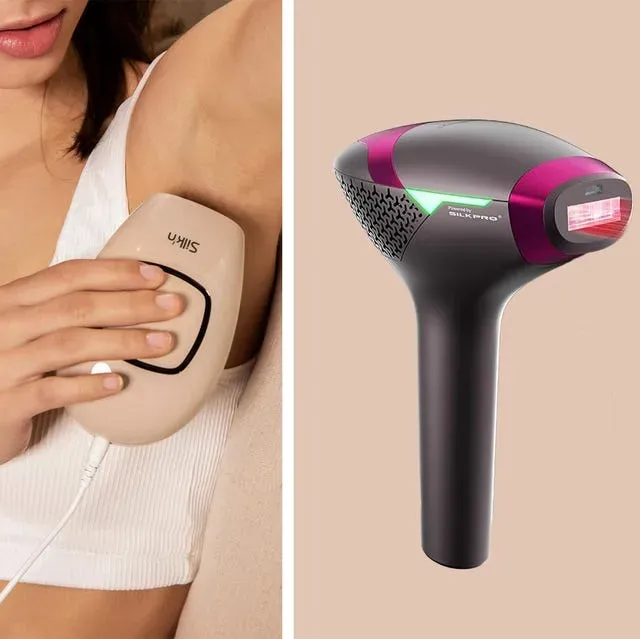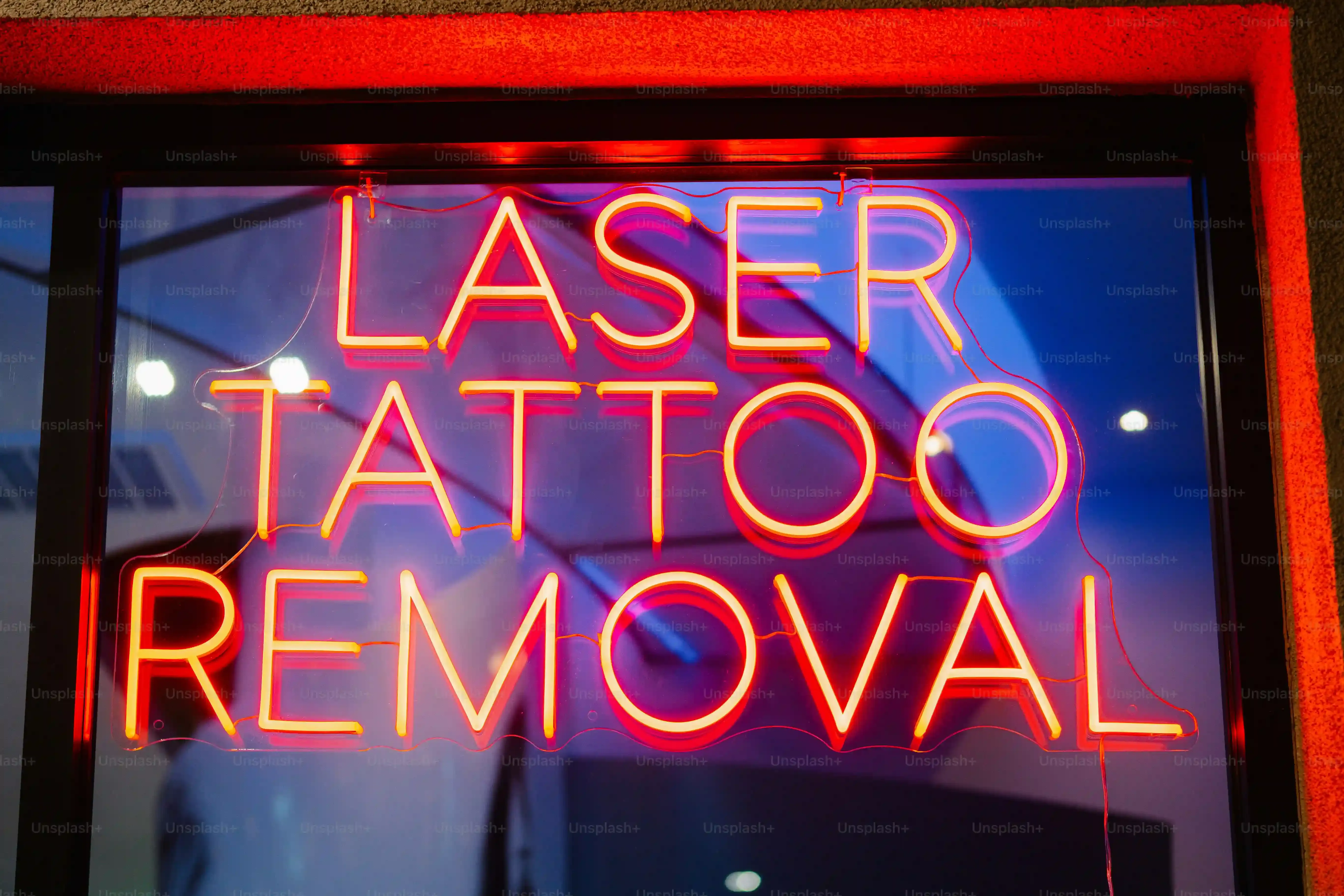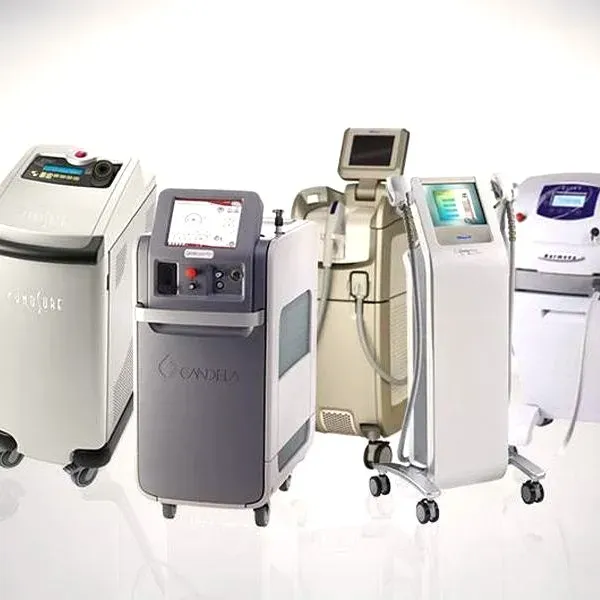Table of Contents
Let's be honest, dealing with unwanted hair feels like a never-ending chore. Shaving leaves stubble by lunchtime, waxing is a painful ritual, and depilatory creams smell like a chemical factory exploded. You’re likely searching for a more permanent solution, something that promises smooth skin without the daily battle. Laser hair removal pops up as the golden ticket, but then you hit the wall of options. Suddenly, you're drowning in jargon about Alexandrite, Diode, Nd:YAG, IPL... and you just want to know: what is the best hair removal laser?
Decoding Laser Hair Removal: What Makes a Laser "Best"?

Decoding Laser Hair Removal: What Makes a Laser "Best"?
It's All About the Wavelength, Not Just the Hype
Forget the fancy marketing names for a second. What truly makes a hair removal laser effective boils down to its wavelength. Think of it like tuning into a specific radio station. Different wavelengths target different things in your skin. For hair removal, the goal is to target the melanin (pigment) in the hair follicle. The laser zaps this pigment, the energy converts to heat, and that heat damages the follicle enough to stop hair growth. But here’s the catch: your skin also has melanin. If the laser’s wavelength is too easily absorbed by the melanin in your skin, you risk burning or discoloration, especially if you have a darker complexion. The "best" laser uses a wavelength that’s absorbed by hair melanin but bypasses skin melanin as much as possible.
Choosing the right wavelength is crucial for both effectiveness and safety. Using the wrong laser can mean wasted money on ineffective treatments or, worse, damage to your skin. A good practitioner understands this science. They aren't just pointing a light at you; they're selecting a tool specifically designed to interact with your unique biological makeup.
Why "Best" is Personal, Not Universal
So, when someone asks, "what is the best hair removal laser?", the honest answer is, "it depends." It’s not a universal truth like "water is wet." What works wonders for your pale, dark-haired friend might be completely ineffective or even harmful for you if you have olive skin and brown hair. This is where the consultation process becomes vital. A reputable clinic won't just usher you in; they'll assess your skin type using a scale like the Fitzpatrick scale, examine your hair color and thickness, and then recommend the laser technology best suited for you. Anyone who says they have one laser that works perfectly for everyone is probably selling snake oil.
Understanding that "best" is relative saves you from chasing after a specific laser type you read about online, only to find it's not the right fit. It empowers you to ask the right questions and ensures you're getting a treatment plan tailored to your needs, not just a generic service.
- Fitzpatrick Skin Type I: Very pale skin, burns easily, never tans.
- Fitzpatrick Skin Type II: Pale skin, burns easily, tans minimally.
- Fitzpatrick Skin Type III: White skin, burns moderately, tans gradually.
- Fitzpatrick Skin Type IV: Light brown skin, burns minimally, tans well.
- Fitzpatrick Skin Type V: Brown skin, rarely burns, tans easily.
- Fitzpatrick Skin Type VI: Dark brown or black skin, never burns, tans profusely.
It's a System, Not Just a Machine
Thinking about what is the best hair removal laser involves more than just the laser machine itself. It's about the entire system. This includes the cooling mechanism integrated into the device (to protect the skin's surface), the technician's expertise, and the pre and post-treatment care protocols. A powerful laser in inexperienced hands is a recipe for disaster. Conversely, even a technically "superior" laser might yield poor results without proper preparation and aftercare. The speed of the laser, the spot size (how large an area it covers), and the pulse duration (how long the laser energy is delivered) all play a role in both efficacy and comfort. A clinic that invests in well-maintained, advanced equipment and employs highly trained staff is arguably more important than fixating on one specific laser model.
When evaluating where to get treatment, ask about their machines, but also ask about their technicians' training and experience. A good system prioritizes patient safety and results, understanding that the laser is just one component of a successful treatment. It's like having a high-performance car; it's useless without a skilled driver and regular maintenance.
Types of Lasers: Which Hair Removal Laser Works for You?
The Alexandrite: Fast and Furious for Fairer Skin
so you've got lighter skin (think Fitzpatrick types I-III, maybe a light IV) and your hair is dark. The Alexandrite laser is often the go-to here. It operates at a 755 nm wavelength, which is highly absorbed by melanin. Because your skin has less melanin, the laser energy zeroes in on the dark pigment in your hair follicle with less risk of damaging the surrounding skin. It’s typically one of the faster lasers, making it good for larger areas like legs or backs. Think of it as a precision strike on dark hair against a light background. It’s very effective for the right candidate, but put this on darker skin, and you're asking for trouble – the skin will absorb too much energy, leading to potential burns or pigment changes.
The Diode: A Versatile Workhorse
Step up to the Diode laser, usually running at an 800-810 nm wavelength. This wavelength is a bit longer than the Alexandrite, meaning it doesn't get absorbed quite as much by melanin in the skin. This makes the Diode a solid choice for a wider range of skin tones, from lighter to medium (Fitzpatrick types I-IV, sometimes V depending on the specific device and your skin). It penetrates deeper into the hair follicle, which can be effective for thicker hair. Many modern Diode lasers also have advanced cooling systems, making the treatment more comfortable. If you're wondering what is the best hair removal laser for a mix of skin types often seen in clinics, the Diode is frequently the answer due to its balance of effectiveness and safety across a broader spectrum.
Laser Type | Wavelength (nm) | Best For Skin Types (Fitzpatrick) | Key Feature |
|---|---|---|---|
Alexandrite | 755 | I - III (sometimes light IV) | High melanin absorption, fast pulses |
Diode | 800-810 | I - IV (sometimes V) | Deeper penetration, versatile |
Nd:YAG | 1064 | IV - VI | Safest for darker skin |
The Nd:YAG: Safety First for Darker Tones
For those with darker skin tones (Fitzpatrick types IV-VI), the Nd:YAG laser, operating at a 1064 nm wavelength, is generally the safest and most effective option. This significantly longer wavelength bypasses the melanin in the epidermis (the top layer of skin) and targets the melanin deeper in the hair follicle. This drastically reduces the risk of burns, hyperpigmentation, or hypopigmentation that can occur with shorter wavelengths on dark skin. While it might require more sessions compared to lasers used on lighter skin, it is the gold standard for ensuring safety and achieving results on darker complexions. If you have rich brown or black skin and are asking what is the best hair removal laser, the Nd:YAG is almost always the correct technical answer.
Skin Tone, Hair Color, and What is the Best Hair Removal Laser Match

Skin Tone, Hair Color, and What is the Best Hair Removal Laser Match
Skin Tone, Hair Color, and What is the Best Hair Removal Laser Match
Alright, let's get down to the nitty-gritty of why your specific coloring matters so much. Laser hair removal works by targeting the pigment (melanin) in your hair follicle. The darker and thicker the hair, generally the more melanin it has, making it an easier target for the laser's energy to absorb. However, your skin also contains melanin. If your skin is dark, it also absorbs the laser's energy. This is the critical balancing act. A laser that works wonders on dark hair against fair skin (like the Alexandrite) would be too aggressive and potentially damaging on dark skin because the skin would absorb too much energy. This is why matching the laser wavelength to your skin tone is paramount for both safety and effectiveness. Trying to use the wrong laser is like using a sledgehammer to hang a picture; you'll likely cause more damage than good. So, when you're trying to figure out what is the best hair removal laser, your skin and hair color are the first things any competent professional will look at.
AtHome vs. Professional: Is There an AtHome Laser That is the Best Hair Removal Laser?

AtHome vs. Professional: Is There an AtHome Laser That is the Best Hair Removal Laser?
The DIY Dream vs. The Clinic Reality
So, you’ve seen the ads – sleek devices promising permanent hair removal while you binge-watch TV on your couch. The allure of zapping away hair in your pajamas is powerful, right? At-home devices, often using IPL (Intense Pulsed Light) or lower-energy lasers, offer convenience and a lower upfront cost than a full course of professional treatments. They work by delivering pulses of light designed to target hair pigment, similar to clinic lasers, but typically at much lower energy levels. This lower power means they are generally safer for home use, reducing the risk of serious burns or damage. However, it also means they are significantly less powerful and often less effective than the machines you’d find in a professional setting, like those used at hairawaybylaser.com. While they can reduce hair growth over time, calling any of them "what is the best hair removal laser" in comparison to medical-grade systems is, frankly, a stretch. They require consistent, frequent use over many months, and the results are often more about hair reduction than true permanent removal.
Key Factors to Consider When Choosing Your Best Hair Removal Laser

Key Factors to Consider When Choosing Your Best Hair Removal Laser
Finding the Right Professional is Half the Battle
So, you've got a handle on the different laser types and how they match up with skin and hair. Great! But knowing the technology is only part of the equation when figuring out what is the best hair removal laser *for you*. The person operating that expensive machine is just as, if not more, important. Think about it: would you let someone who just watched a YouTube tutorial perform surgery? Laser hair removal isn't surgery, but it's not a simple beauty treatment either. It's a medical procedure involving powerful energy devices. A skilled, experienced technician understands the nuances of different skin types, how to adjust the laser settings safely and effectively, and how to handle any potential side effects. Don't be shy about asking about their qualifications, how long they've been doing laser treatments, and how many procedures they've performed on skin types similar to yours. A good clinic, like hairawaybylaser.com, will be transparent about their staff's expertise and their safety protocols. This isn't the time to hunt for the cheapest deal; it's about investing in safety and results.
Beyond the technician, look at the clinic itself. Is it clean? Do they offer a thorough consultation where they examine your skin and hair and explain the process and potential risks? Do they use medical-grade equipment that is properly maintained? A quick, impersonal consultation where they just want to book you in is a red flag. You want someone who takes the time to assess your specific needs and sets realistic expectations. Remember, even the "best" laser in the world won't give you the results you want if it's used incorrectly or in an unsafe environment.
Cost, Sessions, and Managing Expectations
Let's talk numbers and reality checks. Laser hair removal is an investment, both in time and money. It's rarely a one-and-done situation. Hair grows in cycles, and the laser is most effective on hairs in the active growth phase. Because not all hairs are in this phase at the same time, you'll need multiple sessions, typically spaced several weeks apart, to target the majority of follicles. The exact number varies depending on the area being treated, your hair type, and the laser used, but brace yourself for anywhere from 6 to 10 sessions, maybe more. When comparing costs, don't just look at the price per session. Ask about package deals, and get an estimate for the total number of sessions they anticipate you'll need. This gives you a clearer picture of the overall investment. Also, factor in potential touch-up sessions down the line; while results are often permanent hair *reduction*, some maintenance might be needed.
Managing expectations is key to being happy with your results. Laser hair removal significantly reduces hair growth and thickness, and many people achieve long-term smoothness. However, it doesn't guarantee 100% hair removal forever for every single hair follicle. Some fine, light hairs might remain, or new follicles might become active over time due to hormonal changes. Discuss realistic outcomes with your technician during the consultation. Understanding what the treatment can and cannot do helps you appreciate the results you achieve and solidifies your decision on what is the best hair removal laser and clinic for your journey towards smoother skin.
Consider asking these questions during your consultation:
- What type of laser do you recommend for my skin tone and hair color, and why?
- What are the technician's qualifications and experience with this laser?
- How many sessions do you anticipate I will need for the area I want treated?
- What is the cost per session or for a package? Are there any hidden fees?
- What are the potential side effects, and how are they managed?
- What is the cooling system like on the device?
- What pre- and post-treatment care do you recommend?
Making Your Choice for the Best Hair Removal Laser
So, circling back to the original question: what is the best hair removal laser? As you've seen, it's less about a single miracle machine and more about finding the right tool for the job, which means considering your unique characteristics. Whether you lean towards the power of a professional clinic with its array of devices or the convenience of an at-home option, the key is aligning the technology with your skin tone and hair color. Don't fall for marketing hype promising universal results. Do your homework, maybe get a consultation, and pick the laser that stands the best chance of actually delivering the smooth skin you're after, rather than just taking your money.
